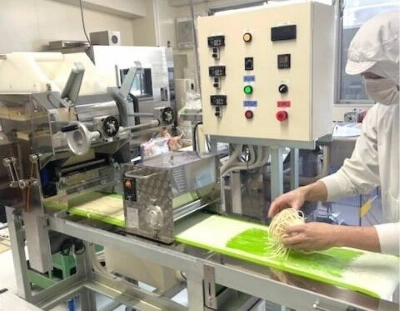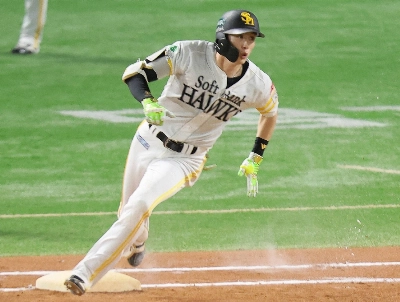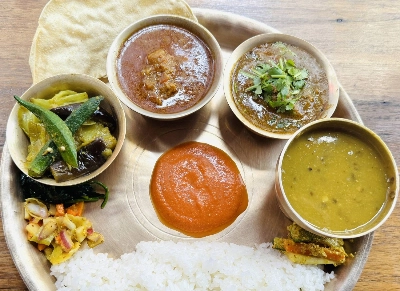Due to the volcanic eruption at the beginning of July 2000, it's been a fairly long time since I experienced a normal Miyakejima summer. Miyakejima, my island home for many years before that, was beautiful in summer, with lush green forests, numerous birds and the deep, blue ocean all around.
Nonetheless, I was often depressed in those days by the careless way that trash of all kinds was thrown into the sea. Nature-loving tourists gathered every evening on the pier at Sabigahama to watch and photograph the gorgeous gold and crimson sunsets. However, these same people would occasionally throw empty plastic film canisters or cigarette lighters into the water.
People seem to think the oceans are so big that nothing can harm them -- that garbage out of sight means "no garbage."
As a scuba diving researcher, I have often been appalled by the litter on the bottom of the ocean near sports-fishing sites and harbors. In recent years, I have found that PET bottles, motor-oil containers, toys, flip-flops and much more that I've picked up on beaches had their origins in faraway places such as the Philippines, Taiwan, Indonesia, Singapore, Hong Kong, South Korea and Australia.
However, a lot of garbage doesn't sink straight away. It may come as a surprise -- nay, a shock -- to learn that a plastic lighter thrown into the sea can kill an albatross chick thousands of kilometers away several years later!
Clearly, humans' tendency to throw all undesirable items into the sea is harmful to marine wildlife. However, the threat became shockingly real to me on a trip to Midway Atoll, a tiny dot of an island in the vast central Pacific Ocean. As president of the Ocean Wildlife Society, I went there in mid-May 2001 to observe OWS ecotourism operations for Japanese wildlife enthusiasts.
Midway is the nesting site of literally millions of seabirds, including more than 700,000 Laysan albatrosses and about 40,000 black-footed albatrosses. It is thus the largest breeding site in the world for Laysan albatrosses and second only to nearby Laysan Atoll for black-footed albatrosses. In addition, there are tens of thousands of black-backed terns, diminutive white terns, red-tailed tropicbirds, greater frigatebirds, and more.
Albatrosses do not dive for their food like penguins, murrelets or cormorants; nor are they experts at snatching food from the surface while in flight. Instead, an albatross's favored way of feeding is to sit on the surface on the edge of a current and pluck food from the water with its huge, strong beak.
During the thousands of years when humans seldom ventured far over the horizon, and our relatively few ancestors produced little garbage and no plastics, PCBs, dioxins or the like, almost everything an albatross picked up was edible. The Laysan albatross specializes in the squid and small fish that were formerly abundant in surface waters; while the black-footed albatross prefers flying-fish eggs that adhere to floating objects, but mainly sargassum algae.
With nearly everything that came their way formerly being edible, Laysan albatrosses evolved no genetic defenses to protect them from the potentially lethal effects of flotsam they now mistake for squid and small fish. Parent albatrosses eat immense amounts during long hours of foraging at sea. They then return to their single chick back at the nesting site and regurgitate much of their stomach contents into their hungry baby's throat.
In the past, only a little of this material would consist of indigestible seaweed, leaves of terrestrial plants or pumice, while the bulk of each meal was edible, including squid, fish and stomach oils of the parent birds. The inedible materials were easily regurgitated by the chicks.
This is no longer true. Parent birds are now swallowing plastic toys, lighters, light bulbs, rope, pieces of leather from bags and shoes, rubber electronic insulation and the rest -- mistaking it all for food. Much of this is regurgitated for hungry chicks. With full stomachs, these chicks have no appetite -- even though a large portion of their stomachs' content nowadays is human garbage, not food.
Unlike squid and fish, plastic, rubber and rope lack moisture, so the chicks also dehydrate. Similarly, such items lack nutrients. The chicks suffers malnutrition and fail to grow properly. Sometimes, cigarette lighters become lodged in a chick's throat or abdomen, causing painful death.
In May and June, Midway's beaches are littered with thousands of dead and dying albatross chicks that are too weak to get airborne and begin their pelagic existence. In fact, research has found that roughly 10,000 Laysan albatross chicks die on those shores annually from the effects of human garbage!
I checked the origins of piles of this lethal plastic at Midway and found familiar Japanese logos, along with materials from China, Canada, the United States, South Korea and Taiwan. Sadly, a significant proportion was from Japan -- though this is more a result of the way the Pacific's currents flow than of particularly bad Japanese behavior. Truly, the garbage problem is global and threatens oceanic wildlife worldwide.
Just think about it: This is a direct result of the sports or professional fisherman, the yachtsman or the golfer at a seaside course, who flips a used lighter into the sea. Even campers, and canoeists in streams and rivers far from the sea, contribute considerably to the problem every time they lob a piece of trash into the water. Months or years later, an albatross chick at Midway Atoll or Laysan Atoll painfully chokes to death as a result of one person's thoughtlessness -- or lack of awareness -- more than 3,500 km away.
And this is just one example of humans' destruction of oceanic wildlife.



















With your current subscription plan you can comment on stories. However, before writing your first comment, please create a display name in the Profile section of your subscriber account page.